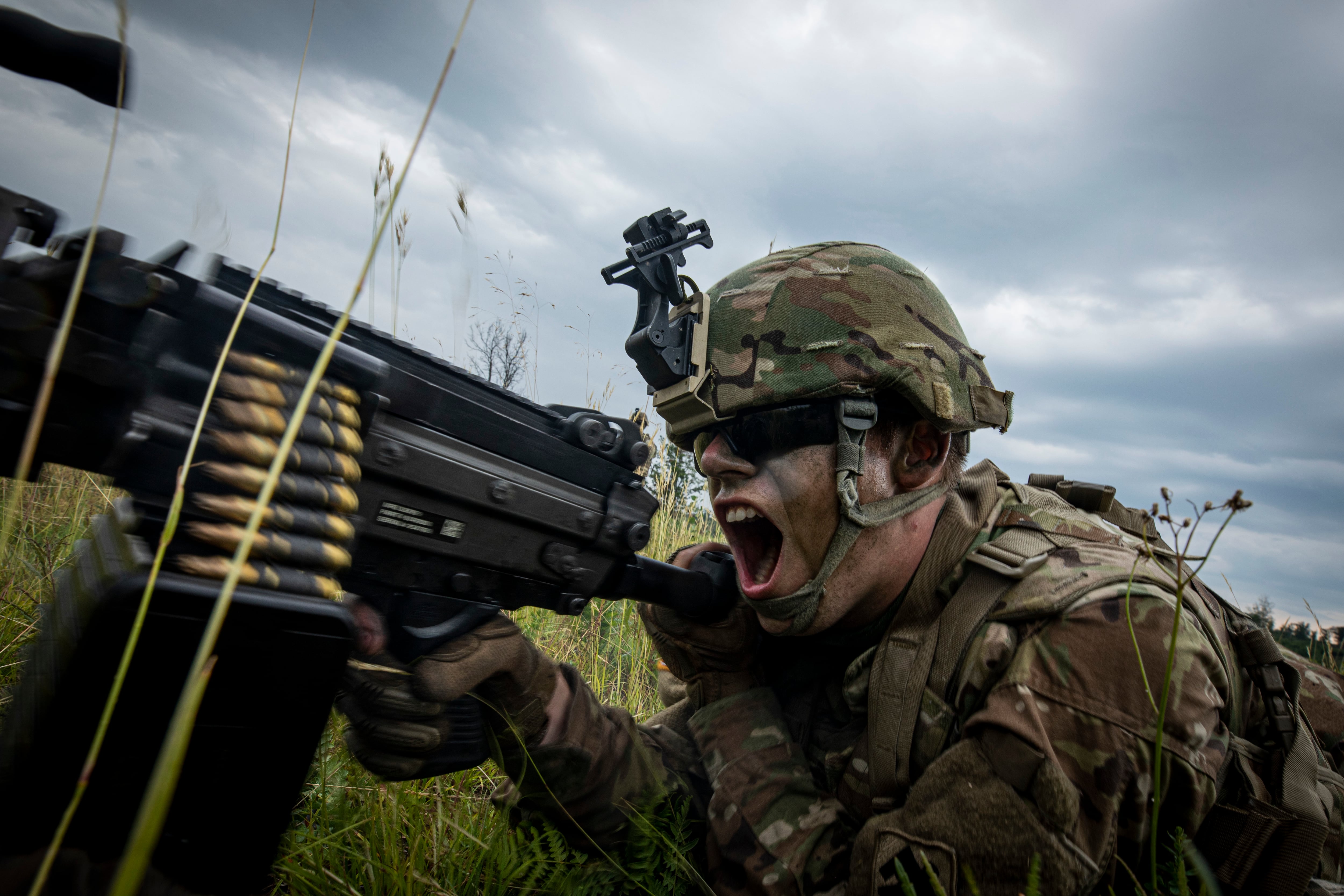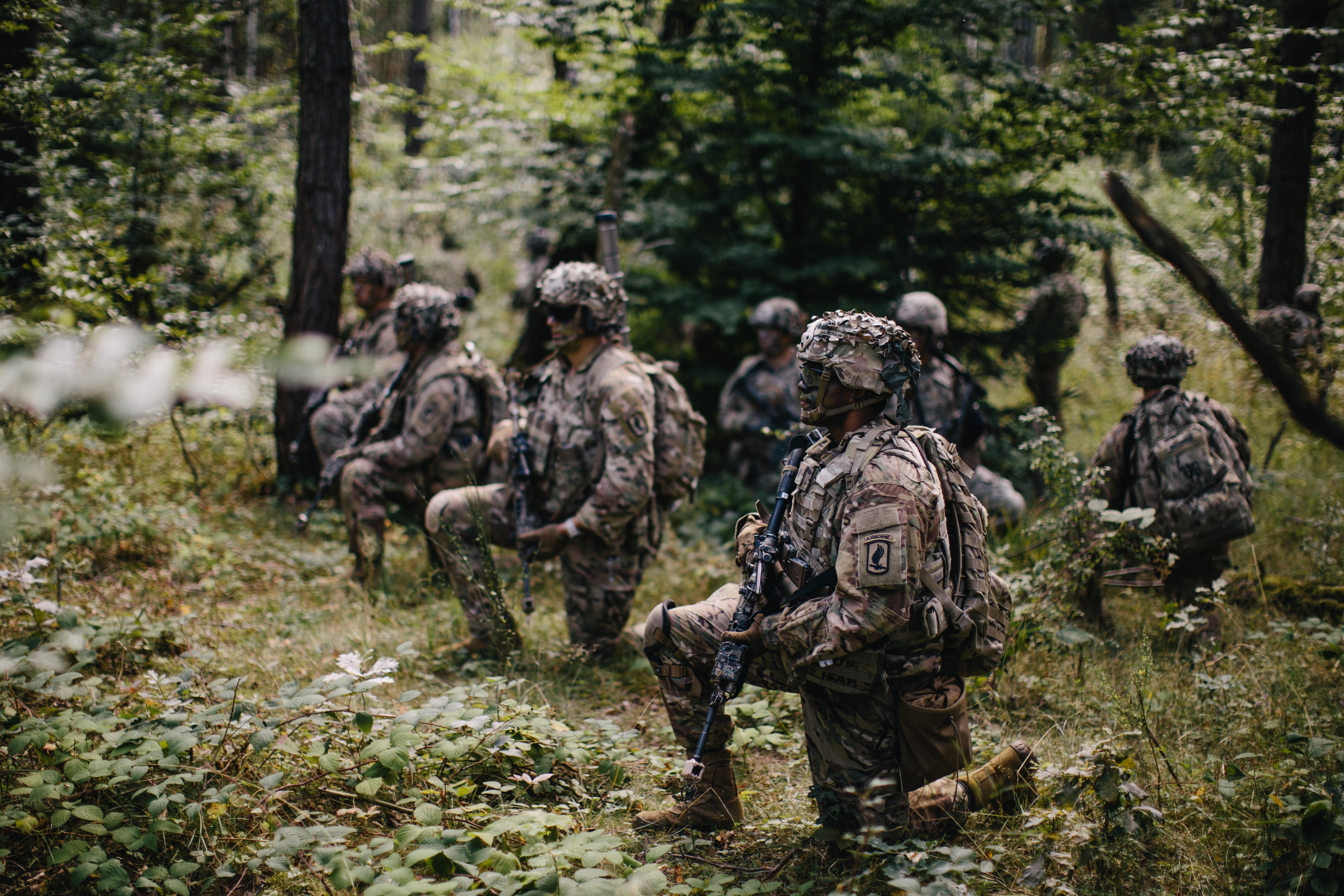The readiness of the brigade combat teams across the Army is in far better shape than it was just three years ago. But is that enough of a measure to know just how ready the Army is for a big fight?
A panel of retired and current top Army leaders spoke Monday at the Association of the U.S. Army’s Annual Meeting and Exposition on what it will take to continue improving Army readiness over the next three years and what that looks like as the Army shifts to modernize everything from recruiting to rifles to tanks and helicopters.
“Our Army’s ready to fight and win today,” said Gen. Michael Garrett, Army Forces Command head. “But the challenge is how do we maintain a sufficient amount of readiness … more importantly as we look to provide credible strategic land power.”
RELATED

Retired Army Lt. Gen. Thomas Spoehr, now with The Heritage Foundation, challenged both the panel and audience at the outset with actually defining what readiness means.
That’s because the Army does more now and will do more in the future than simply deploy BCTs to combat zones.
Seemingly simple things, such as how many dining facilities and barracks rooms are available on an Army installation can affect true mobilization, Spoehr said.
Those comments were echoed after the panel when Lt. Gen. Charles Flynn told Army Times that it will be through a series of large-scale exercises that the Army will test across active, Guard and Reserve what it needs where to get the right number of soldiers to sites to deploy should they be called up in mass.
Michael Linick with the RAND Corporation dove a little deeper on Spoehr’s premise, noting that measuring readiness should be driven by both priorities and resourcing.
While the Army has trained well to operate under the BCT supporting geographic combatant commands model, that’s often under a U.S.-led structure. But he challenged the Army to have a better measure on how those forces would perform under a different leadership or different mission profile.
Also, while more than half of the BCTs are considered at a high level of readiness now as compared to less than a third just three years ago, it may not make sense to achieve and maintain that across the force, given restrictions in funding and staffing.
“The Army is not capable of keeping the entire force at a high level of readiness at all times,” Linick said. “More is good but it’s not always necessary.”
He also cautioned that planners have to keep in mind that readiness is a function of time. That means that rates of change, be it maintenance or adjusting to evolving threats, have to be the impetus for how the Army both evaluates and prepares readiness at all levels.
Flynn told Army Times that as the force maintains readiness, top leadership is using multiple methods to incorporate modernization in parallel.
They’re evolving the Army’s talent management tools to better match soldiers with the right skill sets to the right units that will be receiving new equipment and testing new tactics.
They’re also marrying up existing capabilities in formations with new, but similar, capabilities. For example, a rocket formation would be a natural fit to take on the strategic cannon or hypersonics being developed, he said.
A lot of lessons will be drawn from the Defender exercise series, first in Europe in the coming months followed shortly after by a similar exercise in the Pacific. Both will see large numbers of troops from the United States deploying to the region, falling in place and moving across great distances.
And one such commander seeing some of that under his watch already is Lt. Gen. Chris Cavoli, commander of U.S. Army Europe.
Cavoli is at a hybrid-like position as a leader who uses the readiness provided by training units and planners while also maintaining the ready force that’s put in his command, especially the rotational brigades that support his theater.
Simple things such as unloading in active ports and then moving a lot of armor across Europe on a timely train schedule are tests of readiness that are hard to simulate, he said.
But as the BCTS continue training to the high readiness standard and combatant commanders take on prepared units, Spoehr noted that the Army will have to properly plan for at least two major types of contingencies — the worst case and the most likely.
Though Spoehr said that while the Army must prepare for large scale combat against near-peer threats, in his opinion that scenario is probably not the most likely outcome.
That will mean tradeoff and assessing risk.
The Army may have to “suboptimize” against a particular outcome so that the force can be better optimized against another, Linick said.
Spoehr went further, noting that the United States hasn’t had to prepare for conflict against two major near peers since World War II, but “that’s just where the Army’s going to have to go.”
Todd South has written about crime, courts, government and the military for multiple publications since 2004 and was named a 2014 Pulitzer finalist for a co-written project on witness intimidation. Todd is a Marine veteran of the Iraq War.
